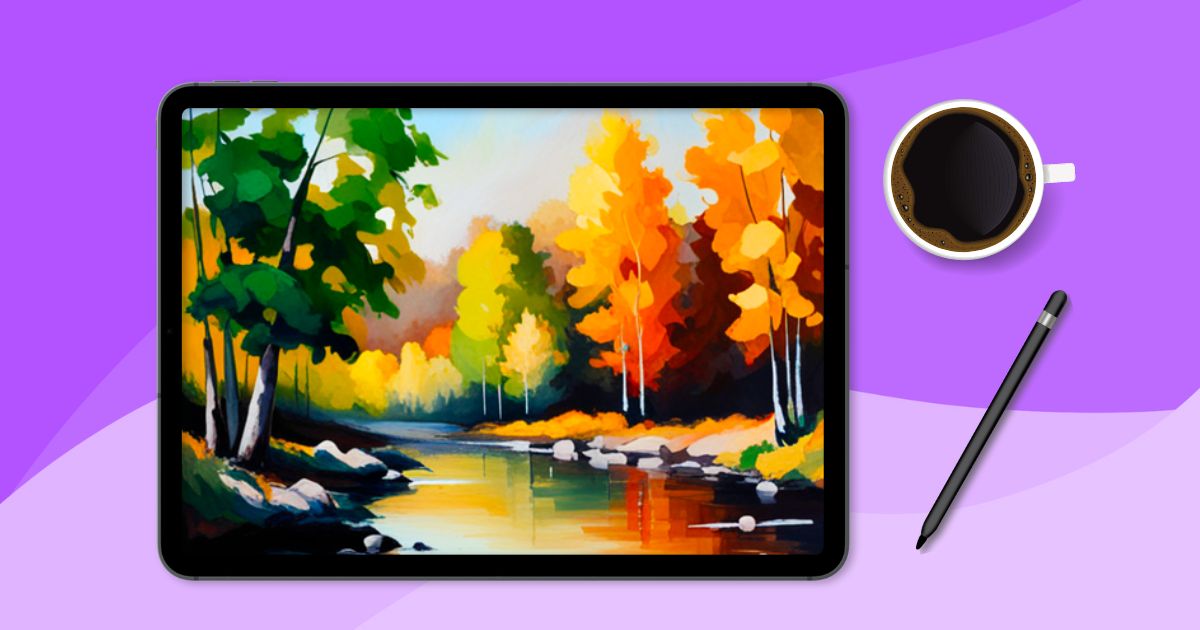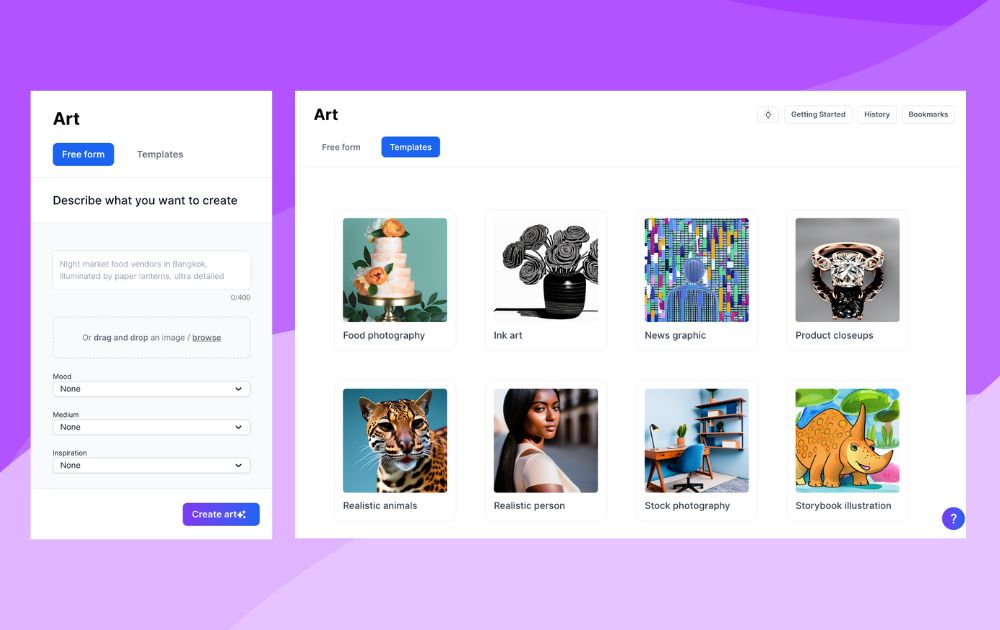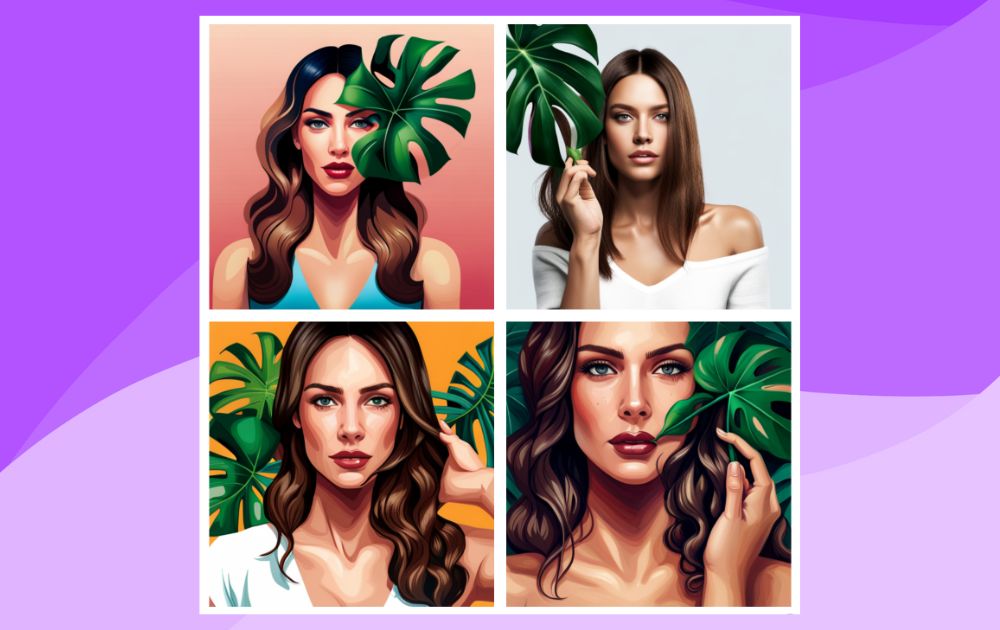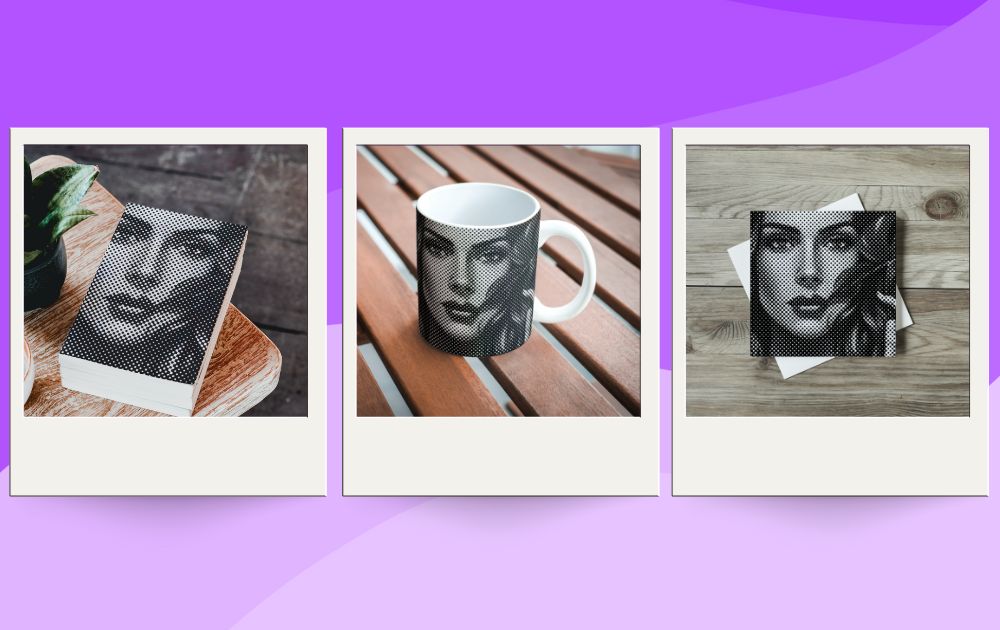
From fantastical landscapes to hyper-realistic portraits, AI-generated images offer a treasure trove of creative potential for individuals and professionals alike.
In this step-by-step tutorial, we’ll tackle the process of obtaining these digital masterpieces and illuminating innovative ways to integrate them into various projects.
Let’s dive right in!
Step 1: Choose a Platform

Many AI newbies ask, how do I get an AI-generated image? It all starts with selecting a reliable platform that specializes in AI images. Some popular options include the following:
- Midjourney. This AI image generator sent shockwaves through the world with its astonishing image crafting capabilities. It crafts images with intricate details, even suitable for advanced design purposes. The basic plan costs $10 a month.
- DALL·E 2. A creation from OpenAI, Dall·E 2 introduces advanced features like Outpainting (expanding images beyond their original canvas) and Inpainting (natural edits within existing images based on a natural language prompt). An image with a 1024×1024 resolution costs $0.020.
- Jasper Art. Jasper Art from Jasper AI effortlessly produces breathtaking images, illustrations, and artistic compositions in mere seconds, all based on the prompts you provide. Jasper’s premium pricing starts at $39 a month with a seven-day free trial.
Aside from the ones mentioned above, which all come with premium fees, you can also choose an AI image generator from text free-to-use. These free apps are best for beginners, hobbyists, and those looking to experiment with AI art without a significant financial commitment.
However, remember that free art generators may offer limitations such as basic customizations, restricted resolution, watermarks, or attribution. The best AI image generator depends on your preferred customization options, output options, and pricing tier.
Step 2: Sign Up or Log In
Create an account on the chosen platform or log in if you already have one. For this tutorial, we’ll use the free trial of Jasper Art.
Step 3: Explore AI Models

Browse the available AI models on the platform. These models often have distinct styles or purposes. Choose a model that suits your image generation needs.
In Jasper Art, you can choose between Free Form or Templates. Templates include categories such as food photography, ink art, news graphic, and more.
Step 4: Customize Images
Once you’ve selected a model, start customizing images. Adjust various parameters such as style, features, colors, and composition to influence the generated images.
Here’s the prompt I used in Jasper Art:
“Photo of a woman with dark hair holding a monstera plant over her head, ultra-detailed.”
I used the app’s Enhance Prompt feature, and it generated this prompt:
“Create a hyper-realistic photograph of a woman with luscious, dark locks holding a vibrant monstera plant gracefully above her head in a serene manner. Pay close attention to details, ensuring that every leaf, strand of hair, and glint of light is captured with the utmost precision for a stunningly lifelike effect.”
You can also choose the mood, medium, inspiration, style, and keywords related to the image you want to generate.
You can also use an AI image generator from an image. Apps with this feature would require you to upload an image, which would be used as the basis or inspiration for the final product.
Step 5: Generate Images

Hit the Generate button to create AI-generated images based on your customizations. You can generate multiple images and choose the ones you like best.
In Jasper Art, the button to click is “Create art.” Shown here are the images that the app generated based on the prompt I used.
Step 6: Download Images
Select the AI-generated images you want to use and download them to your device. Most platforms provide options to download images in different resolutions.
Step 7: Image Editing (Optional)

If desired, you can further enhance or modify the AI-generated images using image editing software such as Adobe Photoshop or GIMP. This step lets you personalize the images to align with your vision perfectly.
For instance, if you’re generating a painting through an AI portrait generator, you may want to adjust the colors, tints, and tones to suit your preferred mood.
Step 8: Determine Usage
Decide how you intend to use the AI-generated images. Here are a few common use cases:
- Digital art and illustration
- Brand style guide
- Digital advertising design
- Product design and visualization
- Content creation
- Fashion industry
- Game development
- Educational materials
- Book covers and publishing
Step 9: Understand Usage Rights

Review the usage rights associated with the AI-generated images. Some platforms might have restrictions on how you can use the images, especially for commercial purposes. Here are a few factors to consider:
- Legal Obligations. The platform or organization that developed the AI model might retain ownership of the images or impose certain restrictions on their usage.
- Commercial Usage. Certain platforms might require you to purchase a commercial license to use the images in this manner. Without the appropriate license, using AI-generated images for commercial purposes could lead to legal complications.
- Ethical Considerations. Be cautious when using AI-generated images in contexts that could be misleading or deceptive. Presenting an AI-generated image as if a human artist created it could raise ethical concerns, especially in situations where the true origin is not disclosed.
- Attribution Requirements. Some AI platforms mandate that you provide attribution to the platform or the AI model used when showcasing or distributing the generated images. Failing to give proper credit could result in violations of usage terms.
AI generates vast quantities of images quickly and can mimic certain styles and patterns. However, it often lacks the depth of emotional interpretation and nuanced artistic decisions that human designers bring to the table.
Our designers here at Penji offer the convenience of AI generators with the intuition of humans. Sign up today and get a high-quality interface created by the world’s top 2% creatives.
About the author

Carla Deña
Carla is a journalist and content writer who produces stories for both digital and legacy media. She is passionate about creativity, innovation, and helping small businesses explore solutions that drive growth and social impact.













